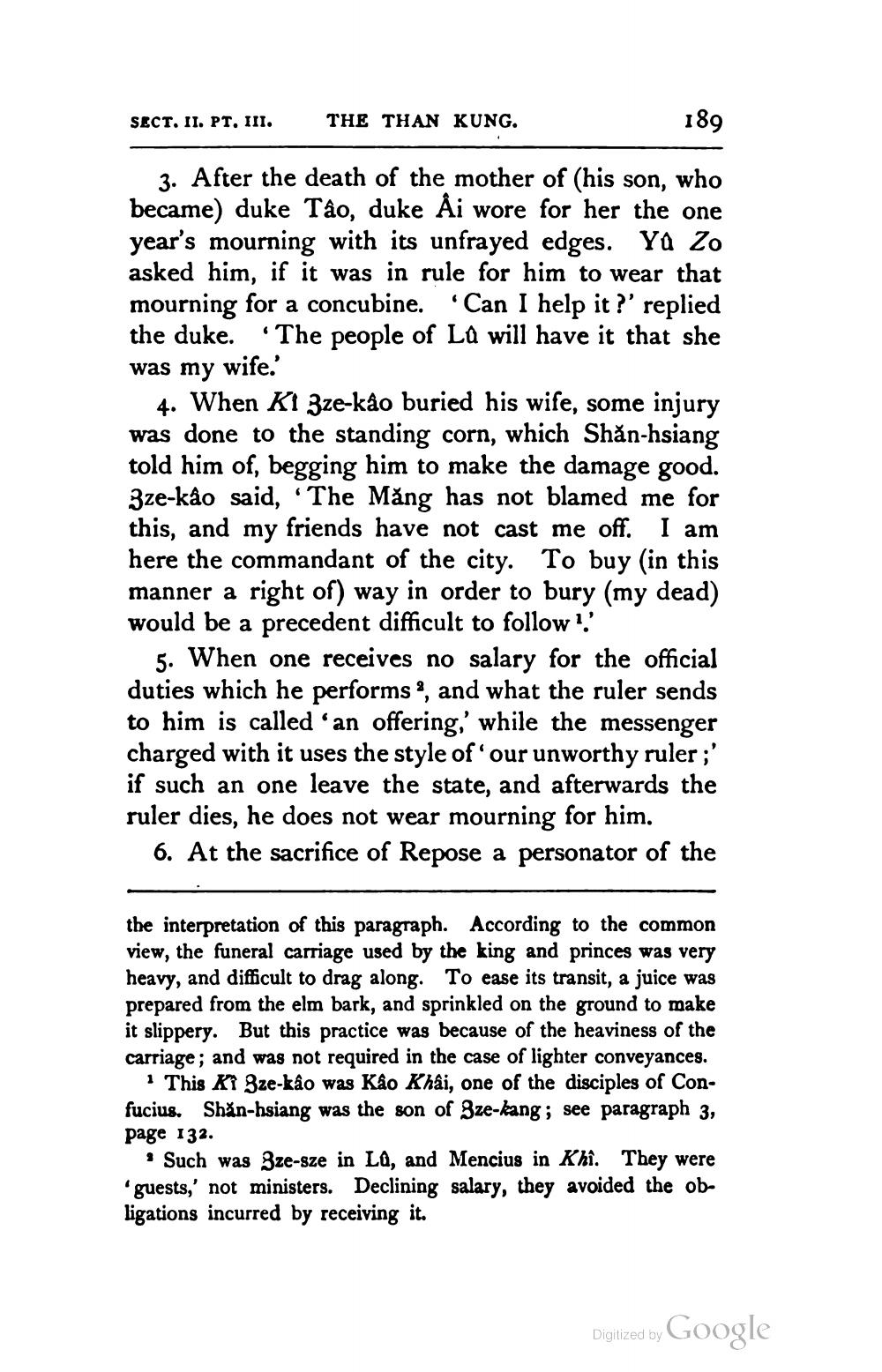________________
SECT. II. PT. III.
THE THAN KUNG.
189
3. After the death of the mother of (his son, who became) duke Tâo, duke Ai wore for her the one year's mourning with its unfrayed edges. Ya Zo asked him, if it was in rule for him to wear that mourning for a concubine. Can I help it ?' replied the duke. •The people of La will have it that she was my wife.'
4. When Ki Zze-kao buried his wife, some injury was done to the standing corn, which Shăn-hsiang told him of, begging him to make the damage good. Zze-kảo said, “The Măng has not blamed me for this, and my friends have not cast me off. I am here the commandant of the city. To buy in this manner a right of) way in order to bury (my dead) would be a precedent difficult to follow !!
5. When one receives no salary for the official duties which he performs 3, and what the ruler sends to him is called 'an offering,' while the messenger charged with it uses the style of our unworthy ruler;' if such an one leave the state, and afterwards the ruler dies, he does not wear mourning for him.
6. At the sacrifice of Repose a personator of the
the interpretation of this paragraph. According to the common view, the funeral carriage used by the king and princes was very heavy, and difficult to drag along. To ease its transit, a juice was prepared from the elm bark, and sprinkled on the ground to make it slippery. But this practice was because of the heaviness of the carriage; and was not required in the case of lighter conveyances.
1 This X1 Sze-kâo was Kảo Khải, one of the disciples of Confucius. Shăn-hsiang was the son of Sze-kang; see paragraph 3, page 132.
Such was 3ze-sze in LA, and Mencius in Khî. They were guests,' not ministers. Declining salary, they avoided the obligations incurred by receiving it.
Digitized by Google




